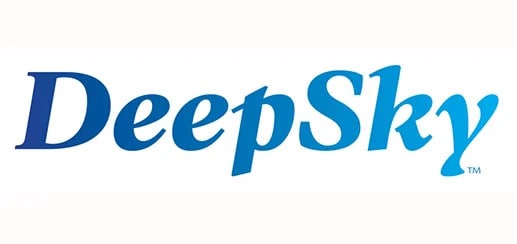Structured Format Document Exchanges Improve Communication Between Retailers and Warehouses
Shipping managers, fulfillment teams, and warehouse operators use Electronic Data Interchange (EDI) to communicate with retailers. By standardizing document formats and establishing communication protocols between computer systems, communications between trading partners are smoother. You can eliminate delays, chargebacks, and account losses with big-box retailers, B2B partners, and marketplaces by mastering EDI.
This guide covers the important concepts of EDI, including common transaction types and how to avoid errors and risks with the best EDI solutions.
What is EDI?
Electronic Data Interchange (EDI) is a method of exchanging business documents electronically between different computer systems, enabling smooth communication and data transfer between trading partners. Instead of relying on paper-based documents or manual data entry, EDI uses standardized formats and protocols to transmit structured data such as purchase orders, invoices, and shipping notices.
Automating the exchange process lets EDI enhance business operations, reduce errors, and improve efficiency in supply chain management and other business processes. It also enhances communication between trading partners and enables businesses to integrate their systems with those of their suppliers, customers, and logistics providers.
How does EDI Work?
EDI works by standardizing the format of business documents and establishing a communication protocol for their exchange between different computer systems. Initially, trading partners agree upon a set of standards for document formatting, such as EDIFACT or ANSI X12. These standards define the structure and content of each type of document, ensuring consistency across transactions.
Once the standards are in place, EDI systems translate business documents from their internal format into the agreed-upon EDI format and transmit them electronically to the recipient’s system using a secure network, such as VANs (Value-Added Networks) or AS2 (Applicability Statement 2) protocols. Upon receiving the EDI message, the recipient’s system processes it, translating it back into its internal format for further processing.
This automated exchange eliminates the need for manual data entry, reduces errors, and accelerates the flow of information between trading partners, enhancing efficiency and collaboration in business operations.
What are the Benefits of EDI?
Using Electronic Data Interchange (EDI) has many benefits for companies in a range of sectors, including:
- Enhanced Efficiency: EDI automates the exchange of business papers, such as shipping documents, reducing the need for manual data entry.
- Improved Accuracy: With reduced human intervention, the likelihood of errors in data entry and document processing is minimized.
- Faster Transactions: Electronic document transmission accelerates information exchange between trading partners, speeding up transactions.
- Cost Savings: By eliminating paper-based processes, businesses save on printing, postage, and document handling costs.
- Better Inventory Management: Real-time visibility into order status and inventory levels allows for more accurate inventory management and reduces stockouts or overstock situations.
- Strengthened Relationships: EDI fosters closer collaboration between trading partners by facilitating seamless communication and reducing order processing times.
- Compliance and Security: EDI systems often have built-in security measures to protect sensitive business data and ensure compliance with industry regulations.
How Many Types of EDI are There?
There are several types of Electronic Data Interchange (EDI), each with its own unique characteristics and implementation methods:
- Direct EDI: Establishes a direct connection between businesses and their trading partners, allowing for customized and controlled data exchange.
- Outsourced EDI: Involves third-party providers managing EDI processes, freeing businesses from technical complexities.
- Web EDI: Accesses EDI functions through web interfaces, suitable for smaller businesses with limited resources.
- Indirect EDI: Uses intermediaries like VANs for data translation and routing, simplifying connectivity with trading partners.
As a point of note, EDI is a unique transmission methodology, and can sometimes be confused with other transmission methods. To better understand a few of those distinctions:
- EDI vs AS2: AS2 ensures secure data exchange over the internet, commonly used alongside EDI for reliable transmission.
- EDI vs VPN: EDI is for structured document exchange, while VPN provides secure internet connections for general data transmission.
How to Implement EDI in Your Business
Implementing EDI in your business involves several key steps:
- Assess Needs: Evaluate processes and identify potential trading partners.
- Choose Solution: Select an EDI solution that fits your needs and budget.
- Establish Standards: Adopt industry-standard formats like EDIFACT or ANSI X12.
- Set Up Infrastructure: Invest in necessary hardware and software.
- Test and Validate: Ensure smooth communication and document accuracy.
- Train Staff: Provide comprehensive training on EDI usage.
- Pilot Implementation: Start with a limited number of partners for initial testing.
- Monitor and Improve: Continuously monitor performance and make necessary adjustments.
What are the Risks Involved with Electronic Data Interchange?
While Electronic Data Interchange (EDI) offers numerous benefits, it also poses several risks that businesses should be aware of:
- Data Security Risks: Transmitting sensitive business data electronically opens it up to potential security breaches, including interception, data manipulation, and unauthorized access.
- Compliance Risks: Failure to comply with EDI standards and industry regulations can result in penalties, legal liabilities, and damage to business reputation.
- System Reliability Risks: Dependency on electronic systems for document exchange makes businesses vulnerable to disruptions such as system failures, outages, or network issues, which can lead to transaction delays and loss of productivity.
- Integration Risks: Integrating EDI systems with existing business processes and software applications can be complex and challenging, requiring careful planning and execution to ensure seamless operation.
- Partner Dependency Risks: Relying on trading partners to maintain compatible EDI systems and adhere to agreed-upon standards introduces the risk of communication breakdowns, compatibility issues, and delays in data exchange.
- Cost Risks: Initial setup costs, ongoing maintenance expenses, and potential investments in system upgrades or enhancements can escalate the total cost of EDI implementation beyond initial estimates.
Discover the Best EDI Solutions for Your Business Today!
Explore the top EDI solutions tailored to your business needs and start simplifying your operations today. With various options available, find the perfect fit to enhance efficiency, improve collaboration with trading partners, and unlock the full potential of electronic data interchange.
FAQs about Electronic Data Interchange
What are EDI Tools?
EDI tools, short for Electronic Data Interchange tools, are software applications that facilitate the exchange of business documents between different computer systems in a standardized electronic format, enabling seamless communication between trading partners.
What is the Most Commonly Used EDI Format?
EDIFACT, or Electronic Data Interchange for Administration, Commerce, and Transport, is the most widely used EDI format. It is extensively used worldwide, especially in Europe and Asia. This is to make electronic business document exchanges easier, including purchase orders, invoices, and international shipment notices.
How is an EDI Different from Email?
The main ways that EDI and email vary are in their goal and structured format. Email is a general-purpose communication tool that may be used to send and receive different kinds of communications between people or organizations. Still, EDI is made expressly for the automated exchange of structured business documents that adhere to standard protocols between computer systems.

















